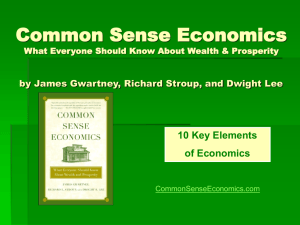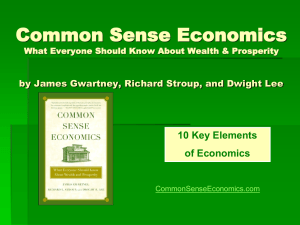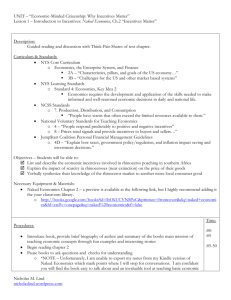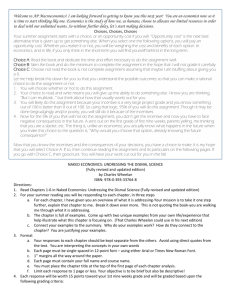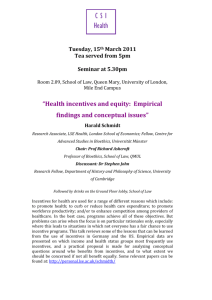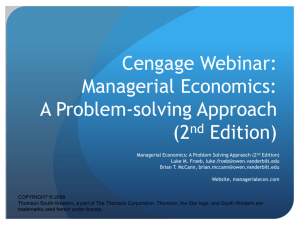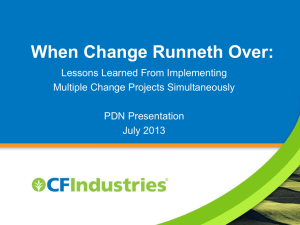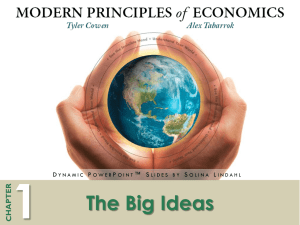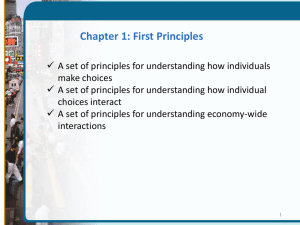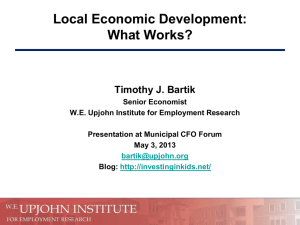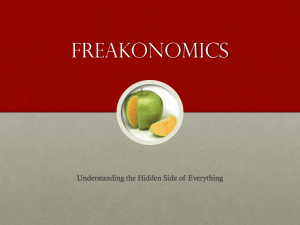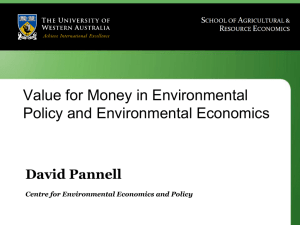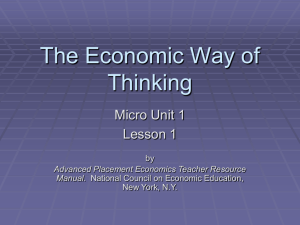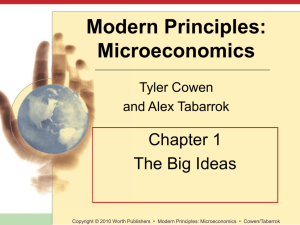Common Sense Economics (2010) by Gwartney, Stroup, Lee, and
advertisement
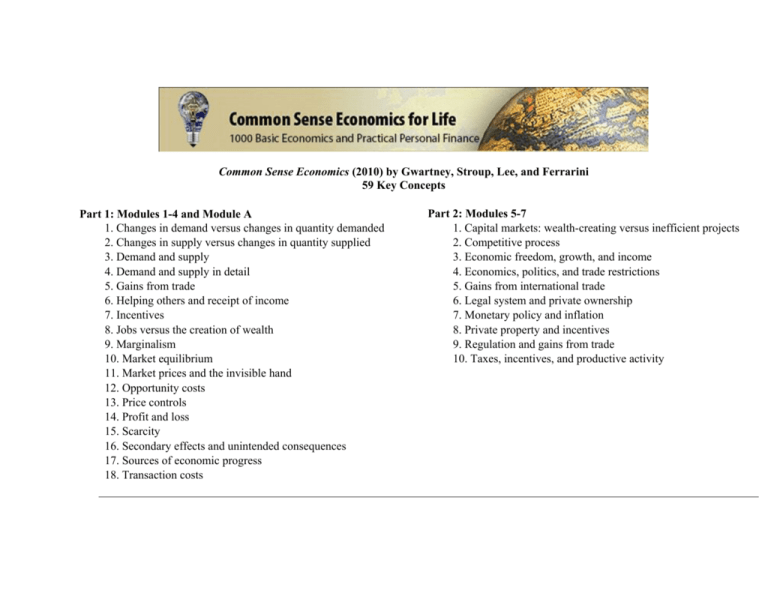
Common Sense Economics (2010) by Gwartney, Stroup, Lee, and Ferrarini 59 Key Concepts Part 1: Modules 1-4 and Module A 1. Changes in demand versus changes in quantity demanded 2. Changes in supply versus changes in quantity supplied 3. Demand and supply 4. Demand and supply in detail 5. Gains from trade 6. Helping others and receipt of income 7. Incentives 8. Jobs versus the creation of wealth 9. Marginalism 10. Market equilibrium 11. Market prices and the invisible hand 12. Opportunity costs 13. Price controls 14. Profit and loss 15. Scarcity 16. Secondary effects and unintended consequences 17. Sources of economic progress 18. Transaction costs Part 2: Modules 5-7 1. Capital markets: wealth-creating versus inefficient projects 2. Competitive process 3. Economic freedom, growth, and income 4. Economics, politics, and trade restrictions 5. Gains from international trade 6. Legal system and private ownership 7. Monetary policy and inflation 8. Private property and incentives 9. Regulation and gains from trade 10. Taxes, incentives, and productive activity Part 3: Modules 8-11 1. Central planning, politics, and resource allocation 2. Competition among governments, incentives, and resource allocation 3. Constitutional rules and sound economics 4. Government failure 5. Market failure 6. Opportunity cost of government 7. Political incentives and short-sightedness 8. Political versus the market process 9. Protective and productive roles of government 10. Special interest and political allocation 11. Transfers, incentives, and the “welfare” of recipients 12. The unintended consequences of transfers and subsidies Part 4: Modules 12-15 1. Budgeting and getting more out of your income 2. Comparative advantage and discovery of career opportunities 3. Dangers of debt and credit card use 4. Diversification and reducing investment risk 5. Entrepreneurship and personal success 6. Indexed versus managed equity funds 7. Investment schemes in which to beware 8. Portfolio adjustments and phases of life 9. Power of compound interest 10. Prudent saving: planning for a “rainy day 11. Random walk theory and stock prices 12. Risk and return: stocks versus bonds 13. Strategic spending: used versus new 14. Teach others sound financial principles Bonus Material: Module D 1. Economic instability 2. Monetary policy and Great Depression 3. Recession and depression 4. Tariffs and trade restrictions 5. Taxes, subsidies, and instability


